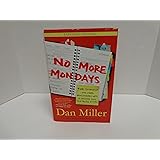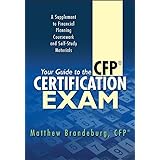Are you feeling overwhelmed and frustrated by the traditional job search methods, sending out hundreds of applications with little to no response? If so, you’re not alone. The video above offers a fresh perspective on how to approach getting a job in 2025, suggesting that cold applying is no longer the most effective strategy. Instead, a more targeted and personal approach is recommended, focusing on direct engagement and networking. This article expands upon those invaluable insights, providing a detailed guide to navigating the modern job market with confidence and purpose.
Navigating the Modern Job Search: A Strategic Approach
In today’s competitive landscape, simply submitting resumes online often leads to a sense of being lost in a sea of applicants. A more strategic method is required for individuals actively seeking new career opportunities. The guidance provided below is designed to empower job seekers by shifting focus from sheer volume of applications to quality engagement and building genuine connections. This shift is crucial for anyone aiming to secure their next role effectively.
1. Defining Your Ideal Career Opportunity
The first step toward a successful job search, as highlighted in the video, involves achieving crystal clarity on the exact role being sought. Vague aspirations often lead to unfocused efforts and unsatisfactory results. It is important that specific parameters are established for the ideal position. This includes not only the job title but also the desired location and, ideally, the industry in which one wishes to work. For example, rather than simply wanting “a marketing job,” a more precise goal would be “Content Marketing Specialist in the SaaS industry in Chicago.”
This level of specificity allows for a much more targeted search. When a clear vision is held, relevant opportunities are more easily identified, and outreach efforts can be tailored with greater precision. This foundational work pays dividends by streamlining the entire job hunting process and increasing the likelihood of finding a truly fitting role.
2. Leveraging LinkedIn Beyond Basic Applications
LinkedIn is undoubtedly a powerful tool for job seekers, but its potential is often underutilized. As suggested in the video, merely applying through LinkedIn is a common pitfall. A more proactive strategy involves using the platform for research and direct connection. Firstly, the desired job title should be searched for, applying filters relevant to one’s experience level. Then, it is important to sort these results by ‘most recent’ to identify current opportunities. This ensures that the efforts are focused on roles that are actively being recruited for.
This method allows for a deeper dive into the available positions. Instead of just reviewing job descriptions, one can also learn about the companies behind them, their culture, and their recent activities. This preparatory research is key to crafting personalized outreach messages that stand out.
3. Identifying and Connecting with Key Decision-Makers
A crucial element of this modern job search strategy is identifying the right individuals to connect with. For each job posting that aligns with your criteria, the hiring manager or a team member within that department should be sought out on LinkedIn. This requires a bit of detective work but is immensely valuable. Often, the job description will mention who the role reports to, or a quick search of the company’s “People” section can reveal potential contacts.
Once potential contacts are identified, a connection request or direct message should be carefully crafted. The aim is to introduce oneself, express genuine interest in the specific role and company, and articulate why one is a perfect fit. This approach moves beyond generic inquiries, demonstrating initiative and a personalized understanding of the opportunity. It is emphasized that vague requests to “pick their brain” should be avoided; instead, a clear, concise message is paramount.
4. Crafting an Impactful Outreach Message
The message sent to a hiring manager or potential colleague is a critical component of this strategy. It must be concise, professional, and compelling. A strong message typically includes three key elements:
- A brief introduction: State who you are and why you’re reaching out (e.g., “I’m a marketing professional with X years of experience, and I noticed the open Content Marketing Specialist role at [Company Name]”).
- Expressed interest and fit: Clearly articulate your interest in the specific role and company, explaining why your skills and experience align perfectly with their needs. Concrete examples of past achievements are highly effective here. For instance, “My experience in developing content strategies that increased engagement by 20% at my previous role directly aligns with the challenges I understand [Company Name] is addressing.”
- A specific call to action: This is where providing specific time slots for a brief chat becomes invaluable, as mentioned in the video. Instead of asking “when are you free?”, suggest “Would you be available for a brief 15-minute chat next Tuesday between 10 AM and 12 PM EST, or Thursday afternoon between 2 PM and 4 PM EST?” This demonstrates respect for their time and makes scheduling easier for them.
A personalized message significantly increases the chances of receiving a response compared to a generic cover letter attached to an online application. It shows that effort has been put into understanding their needs and values.
5. Implementing a Consistent Job Search Rhythm
Consistency is often overlooked but is a vital ingredient in any successful job search. Once the initial setup is complete, it is important to establish a regular routine. Setting up job alerts on LinkedIn for your specific criteria ensures that new relevant openings are not missed. This allows for prompt action when opportunities arise. Regularly checking these alerts, perhaps weekly, helps maintain momentum.
Furthermore, setting a realistic and achievable goal for outreach is essential. The recommendation to reach out to “10 new people every week” is a powerful benchmark. This target provides a manageable number that encourages steady progress without becoming overwhelming. Even if every outreach doesn’t lead to an immediate interview, each connection made contributes to an expanding professional network, which can yield future benefits. This disciplined approach is far more effective than sporadic bursts of cold applications.
By adopting these modern job search strategies, job seekers are empowered to take control of their career trajectory. This method, focusing on clarity, targeted engagement, and consistent networking, often proves to be a more efficient and rewarding path to securing new job opportunities than the outdated practice of widespread, impersonal applications.









